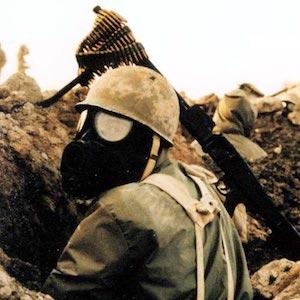The Associated Press reports that blackmailers have poisoned baby food in Germany and will continue to do so unless paid more than €10 million.
It does not appear to be an idle threat, as authorities have found jars of baby food containing ethylene glycol, a chemical used as antifreeze. According to Fisher Scientific, a chemical company, a lethal dose of ethylene glycol is 1.56 grams per kilogram of body mass. A four-month-old baby, which might be six kilograms, could be killed by roughly nine grams of ethylene glycol.
It probably would be difficult to stuff a baby food jar with nine grams of ethylene glycol. A typical baby food jar is two ounces, which might contain 57 grams of food. Cramming in another nine grams of liquid may not be possible. Still, a baby could be poisoned.
What is particularly disconcerting about this story is just how easy it is to pull off acts of chemical terrorism.
Chemical Warfare: A New Strategy for Terrorists?
While the motivation for the blackmailers in Germany appears to be financial, spreading panic (in pursuit of some political goal) is the motivation for most other terrorists. And as we have learned from repeated attacks -- such as mass shootings or drivers who plow trucks into crowded tourist destinations -- it isn't difficult to become a terrorist.
The same may be true for chemical terrorism, as well. It doesn't take much effort to poison food at the grocery store, and poisoning the buffet line at a restaurant would be even easier. The Rajneeshee Cult did just that in a small Oregon town in 1984, albeit using Salmonella rather than a chemical agent, poisoning 751 people. If they had used something like fentanyl, instead, they could have killed them.
Fentanyl, which is used as an anesthetic, has been pouring into our country due to the opioid epidemic. Drug dealers can cut heroin with it, since it is 50 times more potent than morphine and cheap to synthesize. If your local street dealer didn't cut his stash properly, it is rather easy to overdose on fentanyl. In fact, many of the opioid overdose deaths in America may actually be due to adulteration with fentanyl. Carfentanyl, which is 1,000 times more potent than morphine and used as an elephant tranquilizer, is also making its way into our country.
And if drug dealers can get a hold of chemicals like fentanyl and carfentanyl, terrorists can too. Thus, these synthetic opioids should be considered a terrorism threat in addition to a public health menace.
Our society functions not because of government surveillance of potential terrorists but because we trust that the overwhelming majority of our fellow humans are at least decent enough not to kill us. Terrorism undermines that trust, and chemical warfare -- particularly if it's aimed at murdering babies -- may be an effective way to do that.




